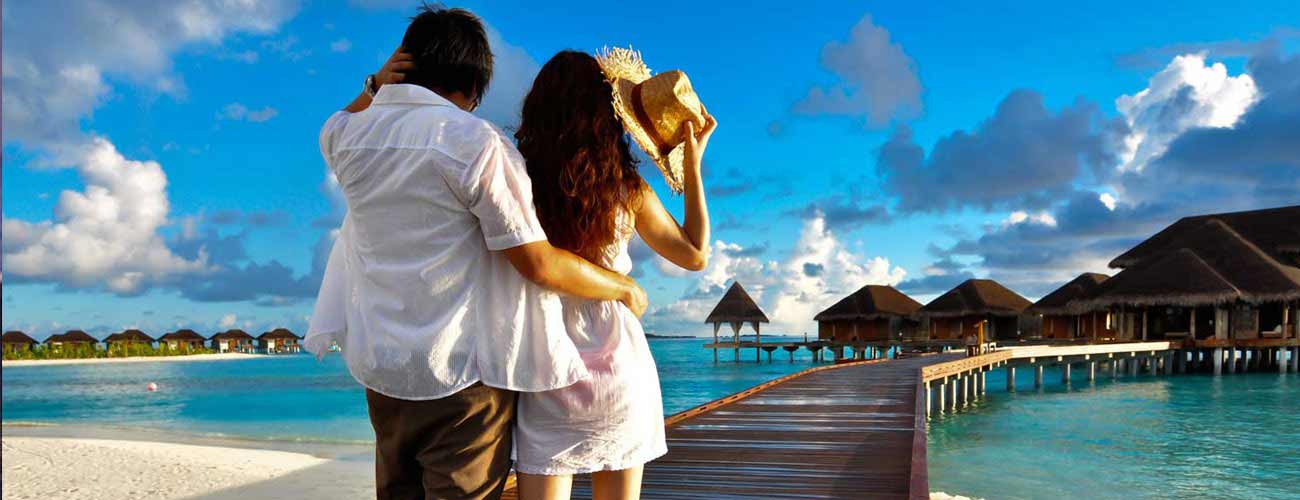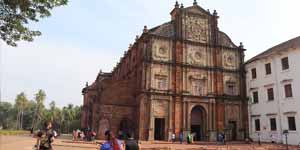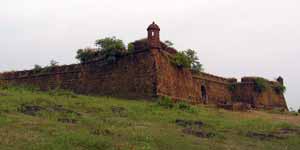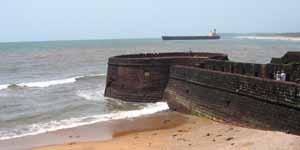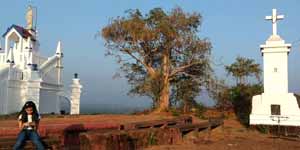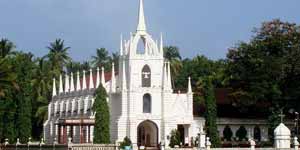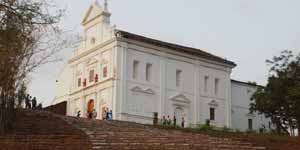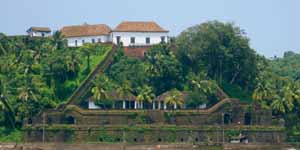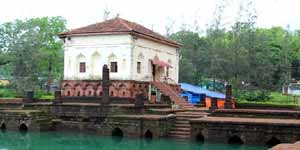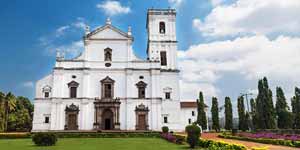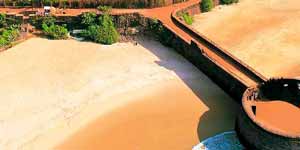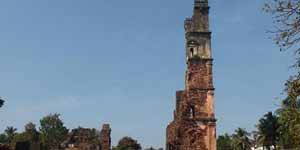
Church of St.Francis
The building of the Church of St. Francis of Assisi, Goa was constructed during 1517-1521 AD. Earlier, there was some other church on the site which was dedicated to the Holy Ghost. However, it was demolished. In its place the now existing Church of St. Francis of Assisi, Goa was built. In this newly built church everything was changed except the foyer. In 1964, the Church of St. Francis of Assisi in Goa was converted into a museum by the Archaeological Survey of India. In this church remains and paintings of Hindu temple sculptures from Goa were stored. This apart, the Goa Church of St. Francis of Assisi is best known for its designs, paintings and rich carvings on the altars also. In this church, two gigantic statues of St Francis Assisi, Jesus on the Cross, statue of St. Michael and an opulently carved forte form major highlight for the tourists. In fact you will also enjoy all these in church along with its architectural brilliance that represents a blend of Tuscan style in exteriors and the Mosaic-Corinthian style in interiors.
The Church of Saint Francis of Assisi is a Roman Catholic Church situated in the main square of Old Goa. The Church and Convent of St. Francis of Assisi were established by eight Portuguese Franciscan friars who landed in Goa in 1517. After their arrival in 1517 with their consistent efforts they constructed a small chapel with three altars and a choir. Eventually in the year 1521 the chapel was modified into a church and dedicated to the Holy Ghost in 1602. Later the church was pulled down and the present church was constructed on the same spot in 1616.
The west facing church has a nave with three chapels on both side, a choir on the first floor, a main altar and two other altars. Belfry and a sacristy are on the north of main altar, today which you see the house of Archaeological Museum was actually a convent forming annexure to the church.
The exterior of the Church is of the Tuscan order while the main entrance is in Manuline style. The main altar is Baroque with Corinthian features. There are no aisles but only a nave, which is rib-vaulted. The internal buttress walls separating the chapels and supporting the gallery on top.
The Church interior includes a richly ornamental niche with a tabernacle supported by the Four Evangelists on the main altar. In a niche on the façade stands a statue of our lady of miracles brought from Jaffna in Sri Lanka. Above the tabernacle are two large statues, one is St. Francis of Assisi and the other is the crucified Christ. A wooden statue of St. Francis of Assisi adorns a pedestal bearing the insignia of the Franciscans. A wooden pulpit richly carved with floral designs is to the left as one enters.
The convent contiguous to the Church now houses a museum that was set up by the Archaeological Survey of India in 1964. The museum contains artifacts, paintings and pieces of Hindu temple sculptures from Goa.
History, Construction and Architecture
The original shrine, constructed by the Fransican monks in 1521 and subsequently enlarged, was showing signs of decay, so a new church was constructed and dedicated to the Holy Spirit. Built in 1665, it retained the portal of the old structure which was in the Portuguese–Manueline style. It is a unique architectural specimen, of this style in the country.
The façade of the church is built in the Tuscan style of architecture with only the portal being Manueline since it is a relic from the older structure. The façade is also distinctive in that it is flanked by octagonal towers.
In 1517, eight Franciscan monks landed in Goa. They immediately set to work and built themselves a small chapel. This chapel was completed in 1521 and dedicated to the Holy Ghost. This building was later expanded upon and later consecrated as a church in 1602. However, it was not in good repair and it was later torn down and reconstructed in 1665.
The church is built of laterite blocks, covered with lime plaster. The original Manueline entrance way is flanked by two octagonal towers. The façade of the church is three tiered and has a small niche which houses the statue of Our Lady of Miracles which was brought from Jaffna in Sri Lanka.
Monuments in Goa
Monuments In Goa If your planning to come on a holiday to Goa, dont ever miss a chance to explore the monumental wonders that flavour this palm-fringed place! Tourists from all over the world cluster here to muddle up with the golden sand and beaches of Goa. Surprisingly very few people are aware of the fact that besides, being a beach state, this place is actually a treasure trove of architectural marvels. You will be amazed to see an impressive array of medieval European architecture - an exclusive interweaving of Portuguese-Gothic style with a Tuscan exterior and Corinthian interior - exhibited inside the walls of these spectacular monuments. The sheer scale and proportion of the country mansions together with the magnificence of its interiors makes them the grandest of all country mansions.
A monument is a statue, building, or other edifice created to commemorate a person, event or as an artistic object. They are frequently used to improve the appearance of a city or location. The Ancient Monuments and Archaeological Sites and Remains Act, 1958 defines an Ancient Monument
Ancient Monument means any structure, erection or monument, or any tumulus or place of interment, or any cave, rock-sculpture, inscription or monolith which is of historical, archaeological or artistic interest and which has been in existence for not less than 100 years and includes:- remains of an ancient monument, Site of an ancient monument. Such portion of land adjoining the site of an ancient monument as may be required for fencing or covering in or otherwise preserving such monument,The means of access to, and convenient inspection of, an ancient monument.
Some of the beautiful monuments of goa are:- Viceroys Arch Goa, Statue of Abbe Faria Goa, Azad Maidan Goa, Goa Medical College Goa etc.
The calm churches, rugged forts, exquisite temples and grandiose country mansions of Goa attract countless tourists from all over the world. So, feel the pleasure of visiting these numerous structures that highlights this beautiful beach land of India.

